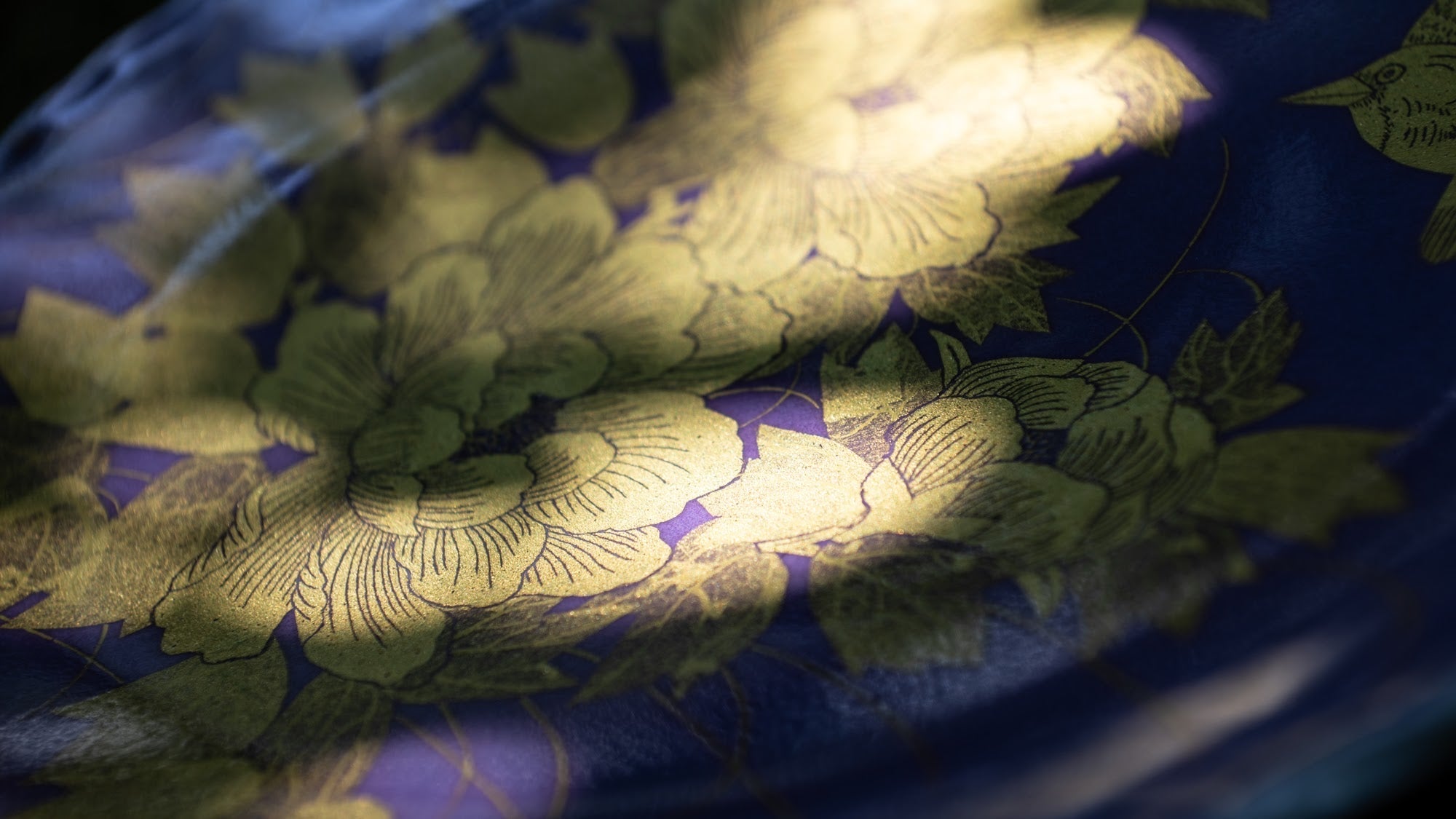


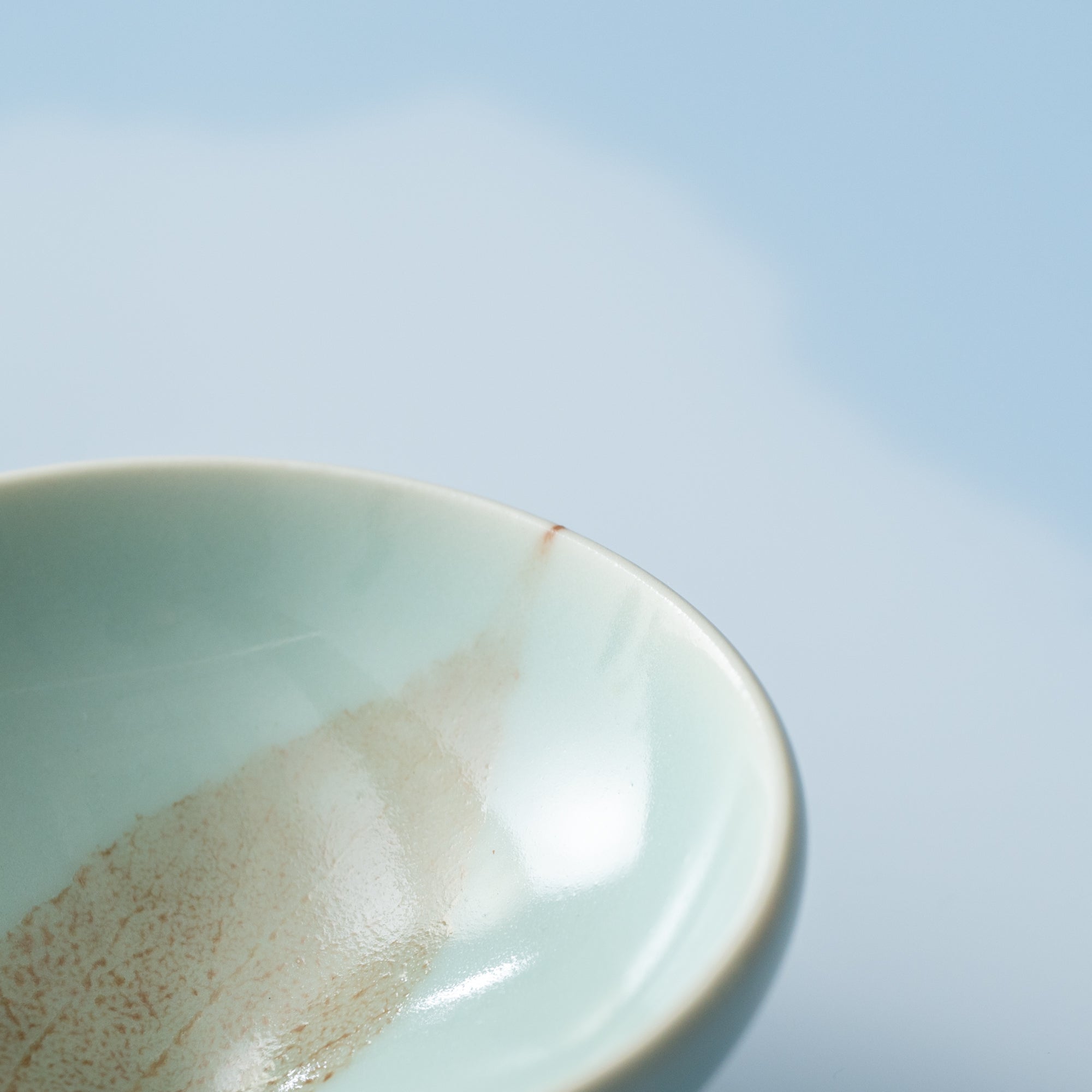

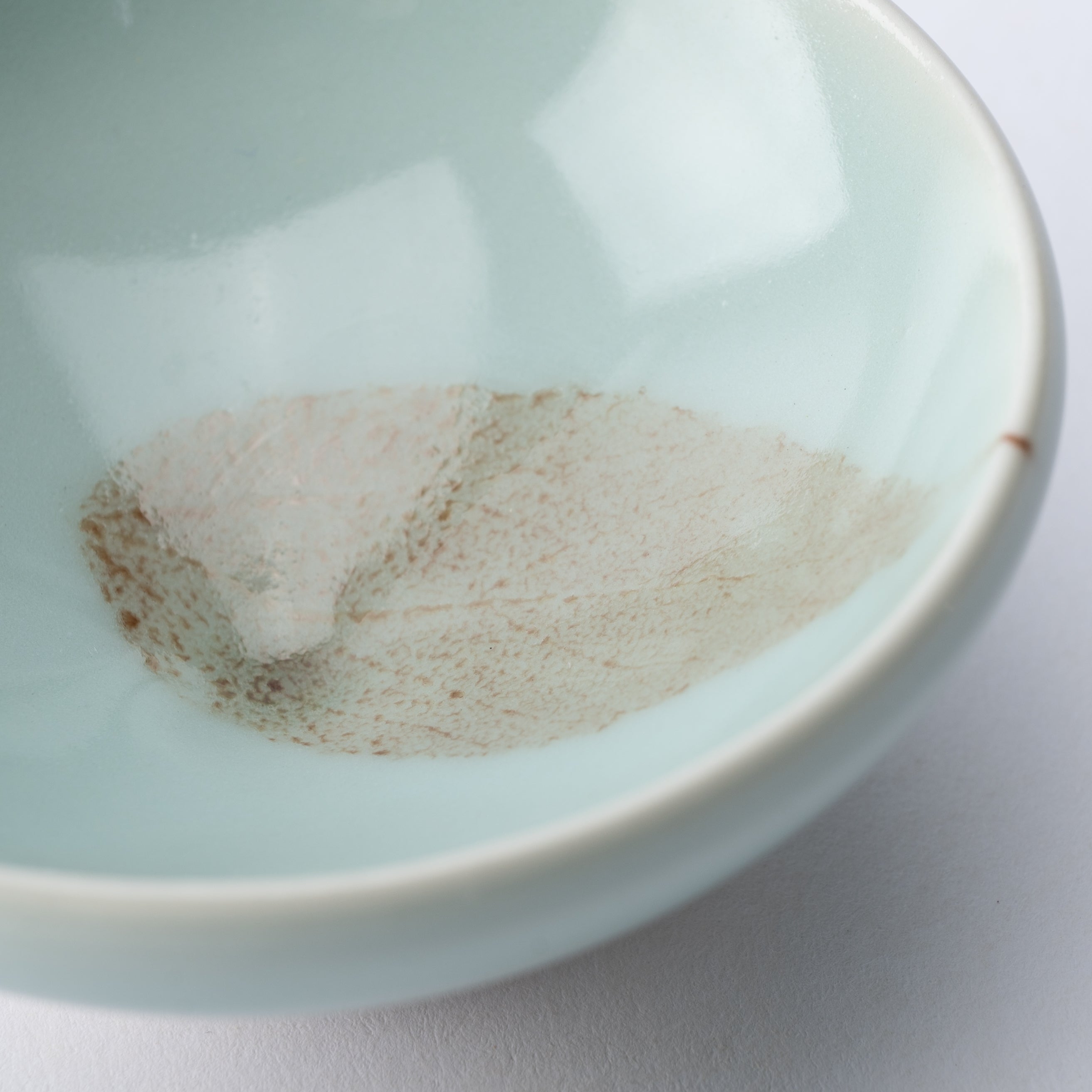
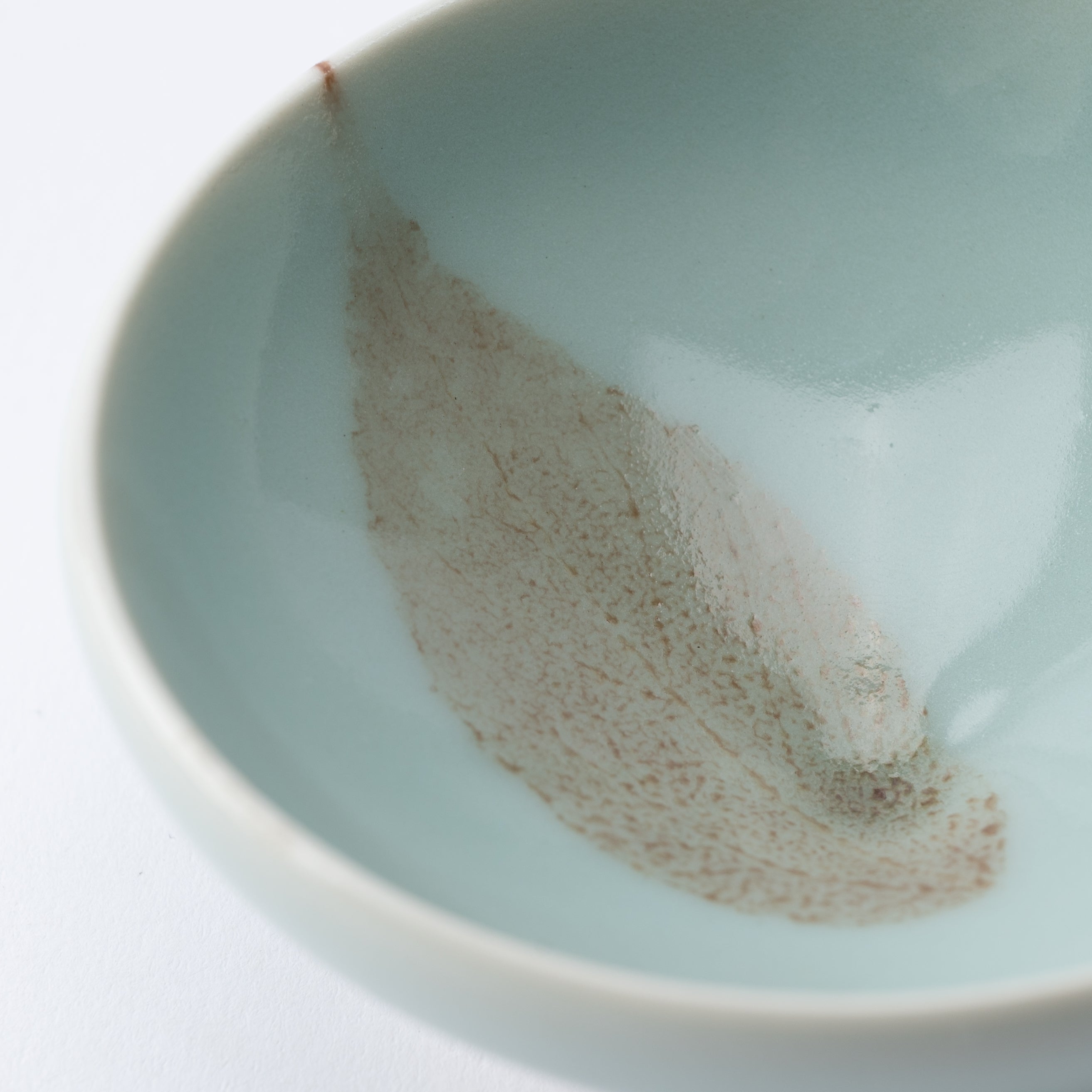


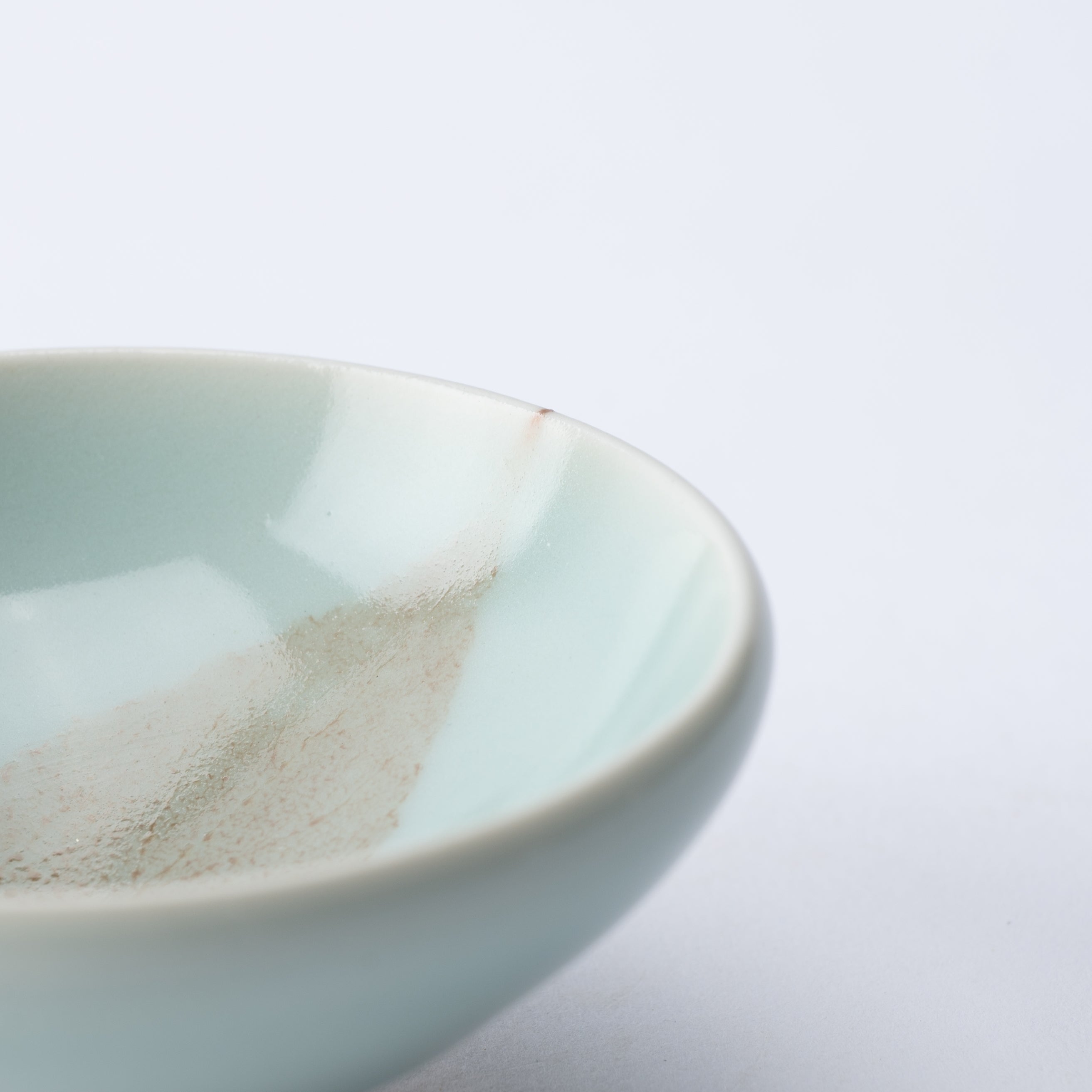







Konoha Tenmoku Sake Cup
Flüchtige Natur, anmutig für immer in Porzellan eingebettet. Der Konoha Tenmoku Sake Cup trägt die ruhige Präsenz eines einzelnen Blattes, dessen zarte Adern und organische Form durch eine Technik, die vor über 800 Jahren während der Südlichen Song-Dynastie in China entwickelt wurde, in die Glasur eingeschmolzen sind. Ursprünglich verwendet in tEnmoku Bei dieser Glasurmethode werden echte Blätter auf die Oberfläche gebrannt und in das Gefäß selbst eingebettet. Der Keramikmeister Dobuchi Yoshiaki hat diese alte Technik neu interpretiert und ihr vor dem Hintergrund der klaren, makellosen Tiefe des Seladon eine neue Raffinesse verliehen.
Der Prozess umfasst ebenso die Auswahl und Vorbereitung der Blätter. Dobuchi sammelt persönlich Blätter von verschiedenen Bäumen, doch nur diejenigen, die seinen strengsten Kriterien entsprechen, werden ausgewählt. Jedes Blatt wird sorgfältig auf Struktur, Textur und Eignung geprüft. Die Jahreszeit spielt eine entscheidende Rolle – junge Blätter speichern zu viel Feuchtigkeit, während Herbstblätter zu trocken und spröde sind, um erfolgreich gebrannt zu werden. Von Tausenden gesammelten Blättern werden nur einige wenige gepresst und konserviert, um sicherzustellen, dass jedes Stück ein Blatt mit einzigartigem Charakter trägt.
Satz Auf der weichen Seladonglasur wirkt das Blatt fast durchscheinend, als schwebe es im Wasser. Die blassblaugrüne Tiefe hebt jedes feine Detail hervor und lässt das Licht die feinen Adern und die organische Anmut hervortreten. Diese Sake-Tasse ist ein Werk der Geduld und Hingabe – eines, das durch die Hände Dobuchis zu neuem Leben erwacht.
DETAILS
| Quantity | 1 |
| Size | D 8.3 cm (3.3 in) x 3.7 cm (1.5 in) |
| Capacity | 40 ml (1.4 fl oz) |
| Weight | 100 g (3.5 oz) |
| Material | Porcelain |
| Package Type | Wooden box |
| Microwave | No |
| Dishwasher | No |
Maker / Brand
Dobuchi Yoshiaki, der Leiter von Kyotos Touan in vierter Generation, ist spezialisiert auf tenmoku: Eine uralte Technik, die in der Keramik seit langem für ihre Tiefe und Komplexität geschätzt wird. Tenmoku hat Generationen von Töpfern mit seiner reflektierenden Oberfläche, der markanten schwarzen Glasur und den komplizierten Mustern inspiriert. Dobuchis Arbeiten spiegeln sowohl technische Meisterschaft als auch künstlerische Vision wider. Jedes Stück ist in der Vergangenheit verwurzelt und baut gleichzeitig eine frische kreative Zukunft auf.
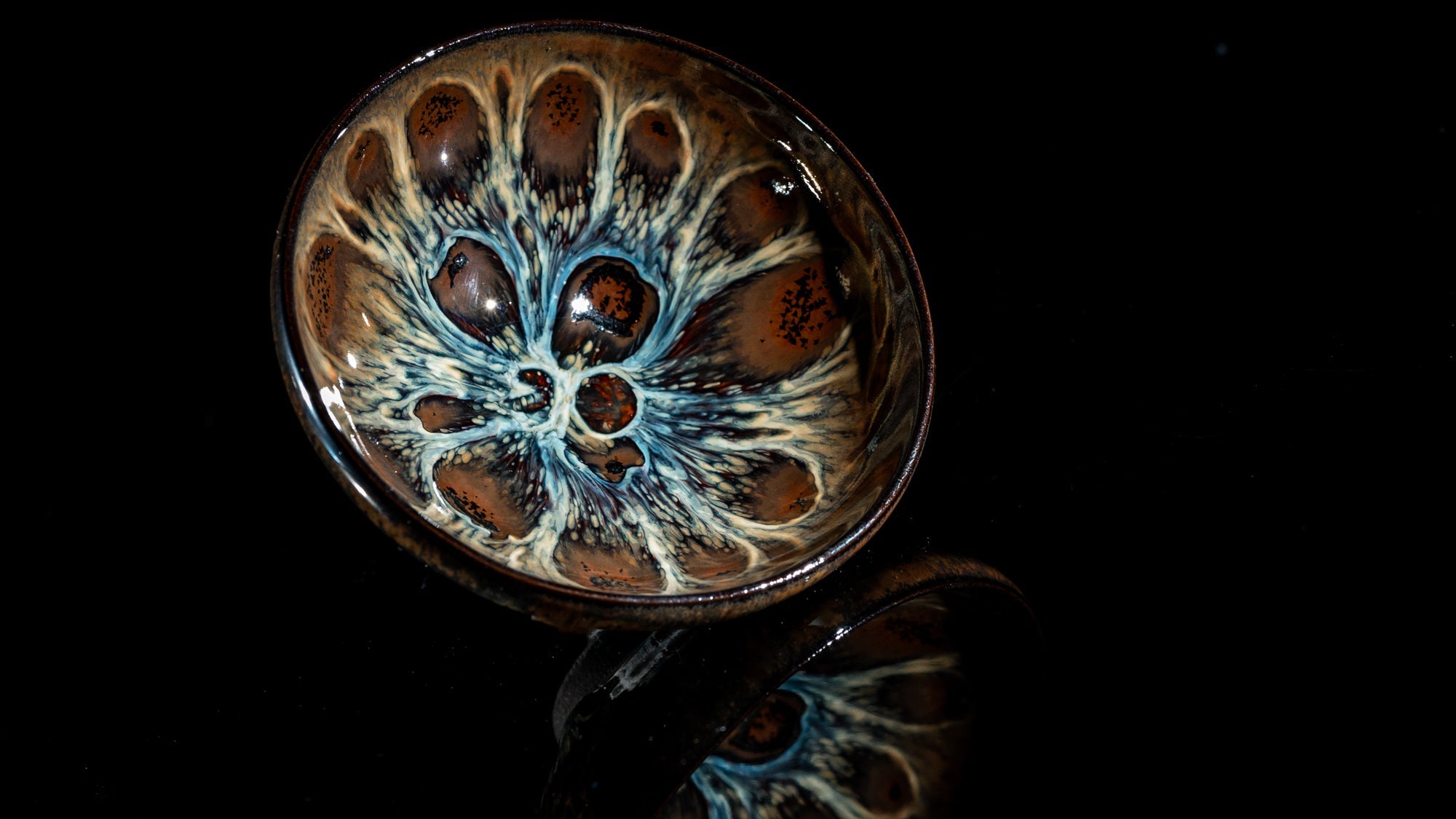
Crafts
Kyo- und Kiyomizu-Ware, zusammen als Kyo-yaki und Kiyomizu-yaki bekannt, sind berühmte Keramikstile aus Kyoto. Bekannt für ihr lebendiges Design, ihre fein geformten Formen und die Liebe zum handwerklichen Detail, spiegeln diese Waren Kyotos unverwechselbaren Sinn für Schönheit und künstlerische Raffinesse wider.
Kyo- und Kiyomizu-Ware zeichnen sich durch eine lange gepflegte Vielfalt aus und greifen auf Techniken und Stile der Töpfertraditionen Japans zurück. So entwickelte sich eine ausdrucksstarke und typisch Kyoto-Kunstform. 1977 als traditionelles japanisches Kunsthandwerk anerkannt, werden sie bis heute wegen ihrer kulturellen Tiefe und Alltagstauglichkeit geschätzt.

Optionen auswählen
About Artist
Musubi-Galerie
Seit seiner Gründung Musubi Kiln hat sich zum Ziel gesetzt, der Welt die feinsten traditionellen Handwerkskünste von Meistern aus ganz Japan vorzustellen.
Hier in der Galerie präsentieren wir Ihnen die höchste Stufe traditioneller Techniken, die über Generationen weitergegeben wurden. Entdecken Sie Werke von Meistern, die diese Methoden nicht nur perfektioniert, sondern mit ihrer Fantasie das Handwerk noch weiter verbessert haben.
Einige dieser Meister wurden sogar zu „Lebenden Nationalschätzen“ ernannt. Dieser Titel wurde ihnen von der japanischen Regierung verliehen, um ihren Beitrag zum Kunsthandwerk und zur Kultur offiziell anzuerkennen. Dadurch wurde ihr Erbe gefestigt und sie wurden zu einem wichtigen Teil der Kunstgeschichte.
Jedes Stück wird über viele Monate hinweg sorgfältig von Hand gefertigt, um einen zeitlosen Schatz zu schaffen, der seinesgleichen sucht. Und wenn es bei Ihnen zu Hause steht, werden auch Sie Teil dieser Geschichte.
Willkommen in der Galerie. Schauen Sie sich in Ruhe um.
